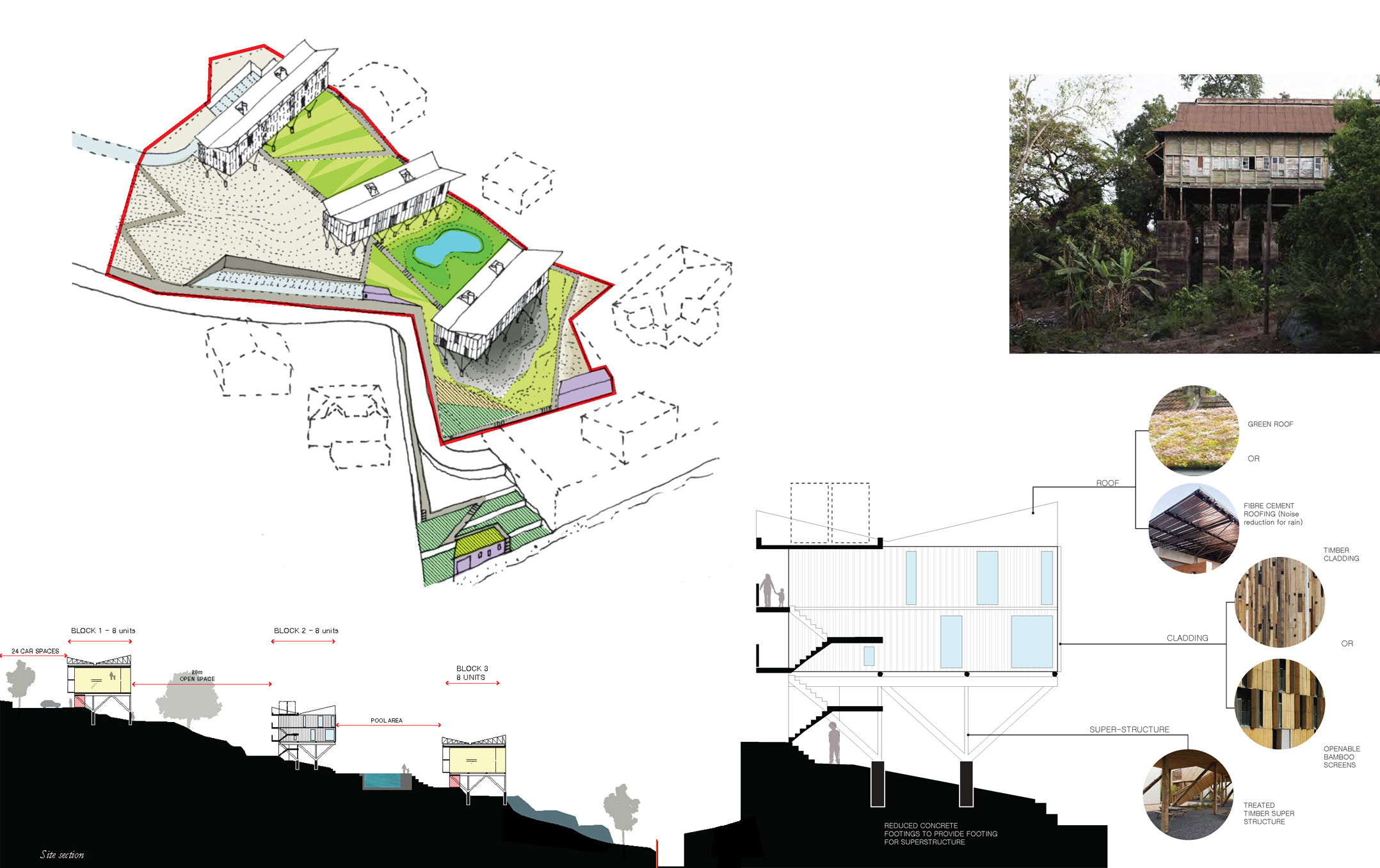BOTTOM MANGO HOUSING
This housing, located on a steep, inner-city site with poor accessibility, has remained abandoned since the 1991 Sierra Leone Civil War. Over time, the site, along with the house and grounds, has been reappropriated by Freetown’s residents as a thoroughfare for and to gain access to subsistence farming.
Steep sites are typical of Freetown’s topography, underlain by hard granite rock and subject to six months of annual rainfall. The client sought to develop this site for low-cost housing. Poor site accessibility, steep slopes, and challenges in maintaining construction quality led to the decision to use prefabricated housing units elevated on pilotis. This approach was seen to reduce potential cut-and-fill costs, while elevating the housing would allow for passive cooling. Additionally, new indigenous planting and agricultural activities were encouraged, supporting ongoing community use and helping to reduce soil erosion during heavy rains. The prefabricated construction method, lifted onto a structural deck, however alludes to the construction practices of Freetown’s 19th-century Hill Station Houses. However, unlike this colonial housing model—which imported both house and structure, reinforcing an exclusive settlement pattern—the intention here was to allow ground works, pilotis, and the exterior skin to permit the continuation and coexistence of present-day practices.
This project was abandoned in 2014 due to the Ebola epidemic in Sierra Leone.
Steep sites are typical of Freetown’s topography, underlain by hard granite rock and subject to six months of annual rainfall. The client sought to develop this site for low-cost housing. Poor site accessibility, steep slopes, and challenges in maintaining construction quality led to the decision to use prefabricated housing units elevated on pilotis. This approach was seen to reduce potential cut-and-fill costs, while elevating the housing would allow for passive cooling. Additionally, new indigenous planting and agricultural activities were encouraged, supporting ongoing community use and helping to reduce soil erosion during heavy rains. The prefabricated construction method, lifted onto a structural deck, however alludes to the construction practices of Freetown’s 19th-century Hill Station Houses. However, unlike this colonial housing model—which imported both house and structure, reinforcing an exclusive settlement pattern—the intention here was to allow ground works, pilotis, and the exterior skin to permit the continuation and coexistence of present-day practices.
This project was abandoned in 2014 due to the Ebola epidemic in Sierra Leone.



